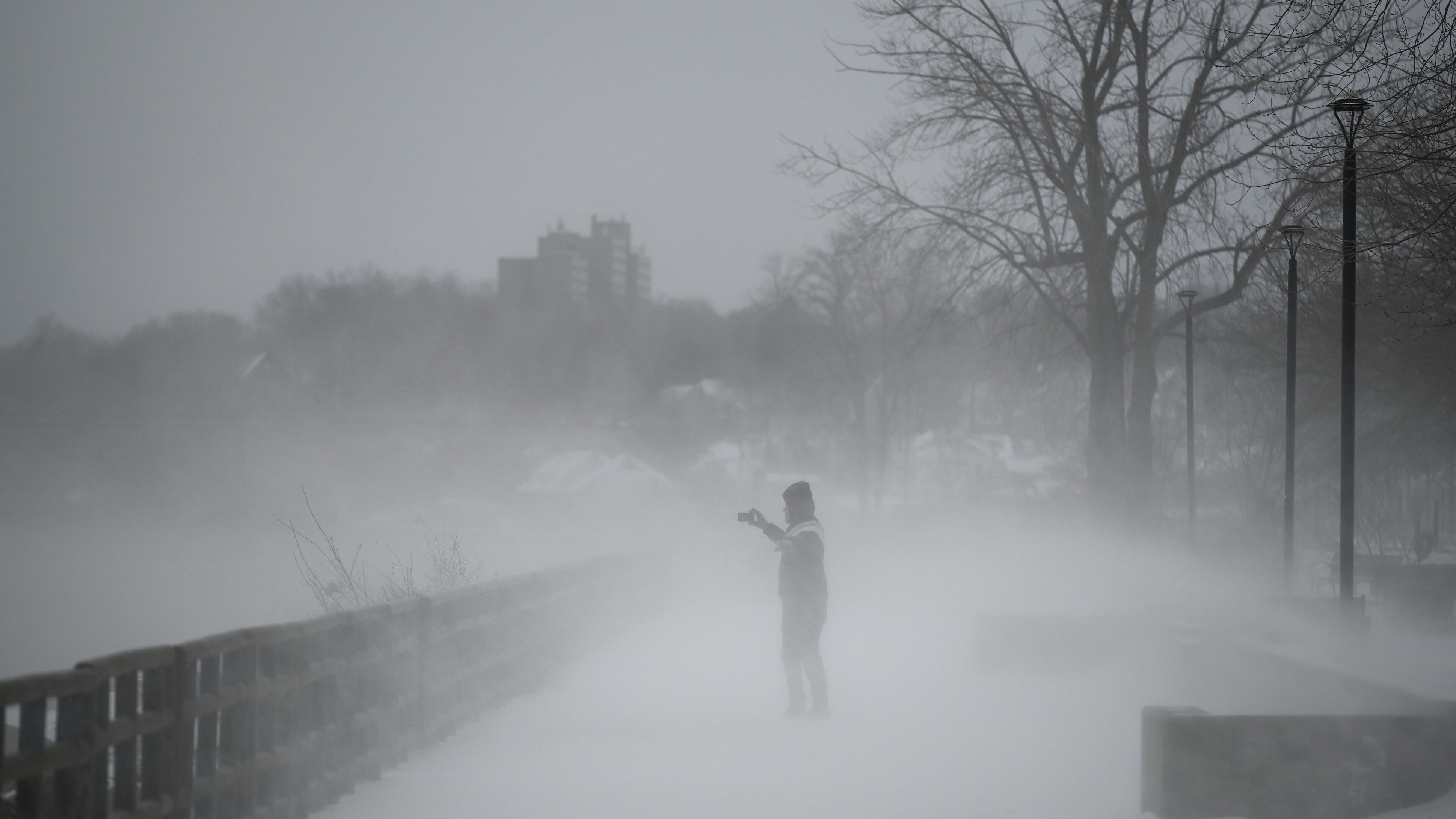
Representative image of winter in the United States.
Credit: The New York Times
Temperatures are likely to be above average this winter across most of the northern tier of the United States, including in the Northeast and much of the West Coast, the National Oceanic and Atmospheric Administration said Thursday in its seasonal forecast.
But a slightly warmer winter doesn’t necessarily mean there is going to be less snow. A strong El Niño is expected to be the driving force behind the overall forecast this winter, pushing temperatures above normal across much of the country and raising precipitation levels in the southern United States, particularly the Southeast.
The outlook, from the Climate Prediction Center at NOAA, comes after the winter of 2022-23 was the second-warmest ever in the Northeast, and after New York City’s first measurable snow of the season arrived later than ever recorded. Though warmer temperatures may prevail again in the Northeast, more nor’easters could hit major East Coast cities this winter.
El Niño also could bring wetter-than-average conditions across California, a year after parts of the state received over 20 inches of rain and experienced landslides, heavy snow and blizzard conditions that stranded some residents and tourists for days.
“There is some hope for snow lovers,” Jon Gottschalck, chief of the operational prediction branch of the Climate Prediction Center, told reporters Thursday.
But this is likely to be the case only in some places.
The winter outlook by region
— Northeast: Forecasts are leaning toward a warmer-than-average winter, particularly farther north, into New England. Most of the Northeast is likely to have normal precipitation. Still, forecasters believe that above-average precipitation is likely along the Interstate 95 corridor, including the Washington, Baltimore, Philadelphia, New York and Boston areas. This increased precipitation is likely to come in the form of major storms along the East Coast.
— South: Above-average precipitation is likely across the region, easing drought from Texas to Tennessee, with higher confidence among forecasters of increased precipitation in Florida. Despite the strong El Niño influence, which would typically bring cooler temperatures to the region, forecasters believe there is an equal chance that temperatures will be above or below average.
— Great Lakes: After a winter of big lake-effect snow events, including the fourth-snowiest day ever in Buffalo, New York, forecasters believe a season of below-average precipitation is in store this year. Temperatures are expected to be above average, which will probably mean less snow.
— Southern Plains and Southern Rockies: There is at least some indication that precipitation will be above normal and that there could be an increase in snowfall. Temperatures are expected to be near normal.
— Midwest, Northern Plains and Northern Rockies: Temperatures are likely to be above average across the northern tier of the country. Parts of the Midwest and the Northern Plains could have below-average precipitation, including less snow. Across the Northern Rockies, drier conditions are more likely and drought could continue.
— Northwest: Precipitation may stay near normal levels, but there is a strong indication that temperatures will be above average.
— Southwest: Temperatures are expected to be above average, especially across Southern California and Nevada, where forecast models are calling for slightly above-average precipitation.
— Alaska and Hawaii: Temperatures are likely to be above average. Precipitation could be above average in Alaska’s northern tier. Drought is expected to persist in Hawaii, as below-average precipitation is likely.
Believe the forecast, but with a grain of road salt.
When meteorologists produce these forecasts, they are giving an educated probability that temperatures and precipitation will be above or below average. But if there is a 20 per cent chance that temperatures will be above average, that doesn’t mean that there won’t be a record-breaking cold outbreak. Likewise, if a dry winter is expected, that doesn’t mean that there won’t be a blockbuster snowstorm.
Last year, forecasters predicted that California’s winter would be warmer and drier than average. But the Southwest was hit with cooler temperatures and back-to-back atmospheric rivers, inundating the region with precipitation. To be fair to the forecasters, seasonally unpredictable conditions like these can occur in any season.
El Niño will drive weather patterns.
The stronger an El Niño event, the more likely it is to affect temperature and precipitation across the globe because it influences the jet stream, a swift river of wind at a level of the atmosphere where airplanes often cruise. During North America’s winter months, it plays a major role in separating warm and cool air masses, all while steering storms from the Pacific across the continent. The change in the jet stream’s position will have a considerable effect on the weather that occurs across the United States.
Forecasters caution, though, that there are many other factors at play: The Arctic Oscillation, for example, can cause a sudden arctic outbreak that allows for nor’easters to develop, or the Madden-Julian Oscillation could increase the amount of precipitation in the Northwest.
Then there is the influence of climate change, which meteorologists take into account when making their forecasts. “Winter is one of the warmest, fastest warming seasons for many places across the country,” Tom Di Liberto, a NOAA climate scientist, said.